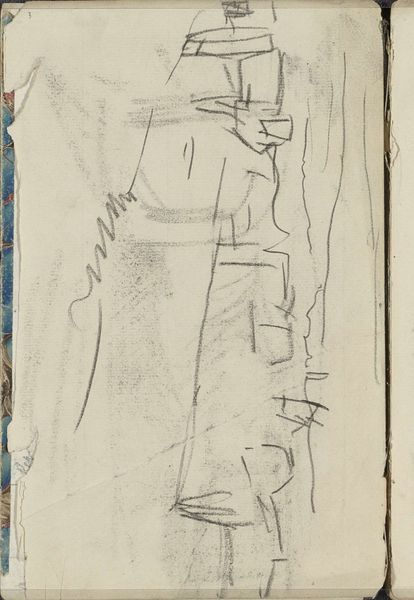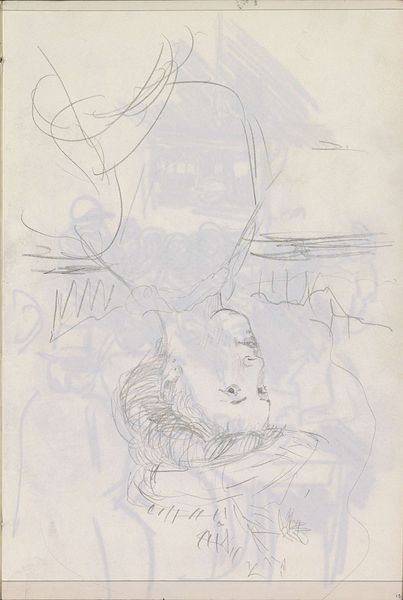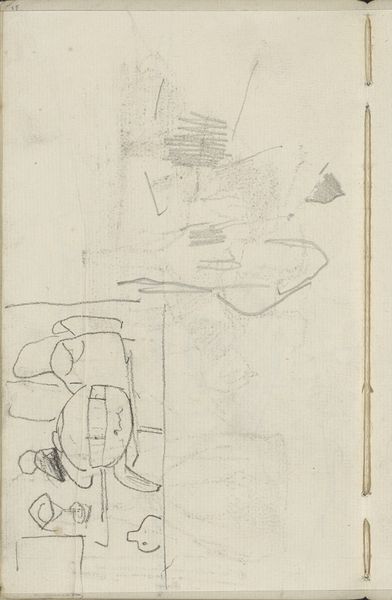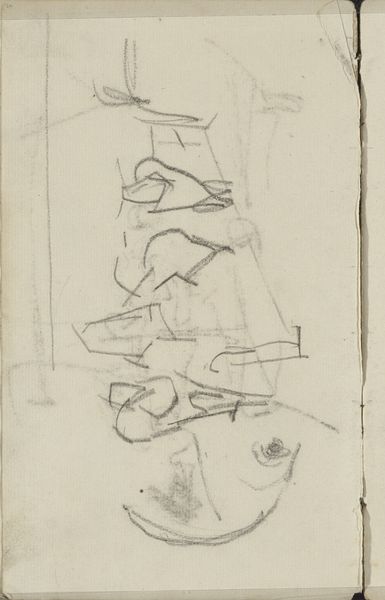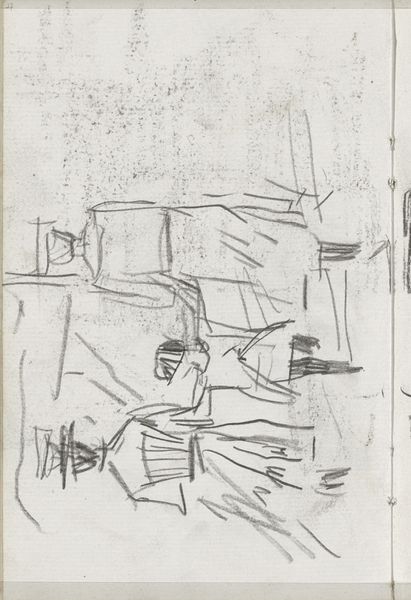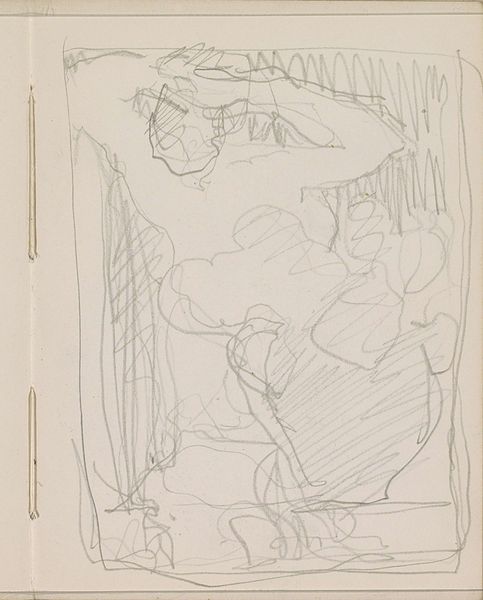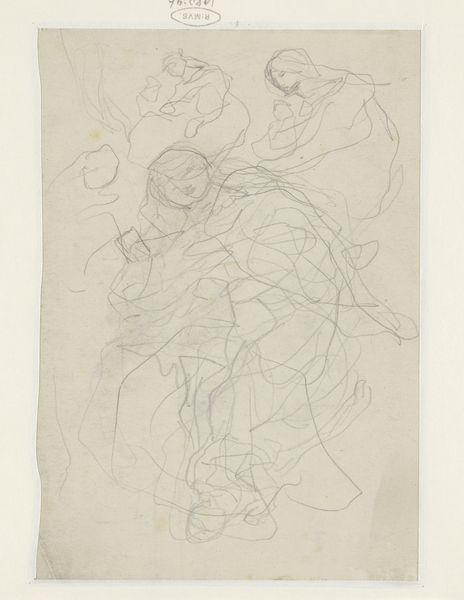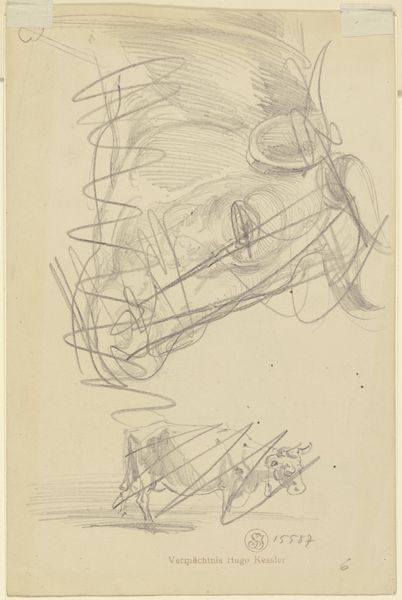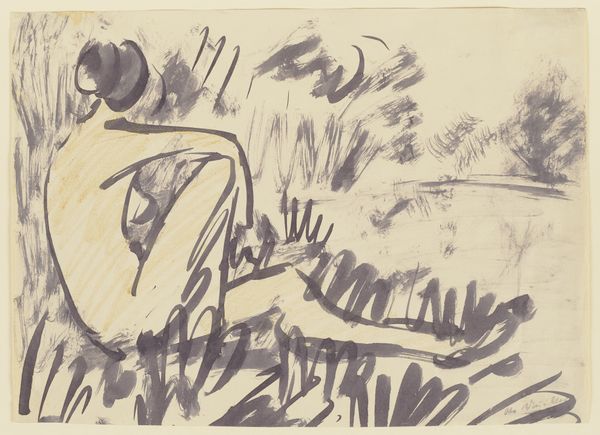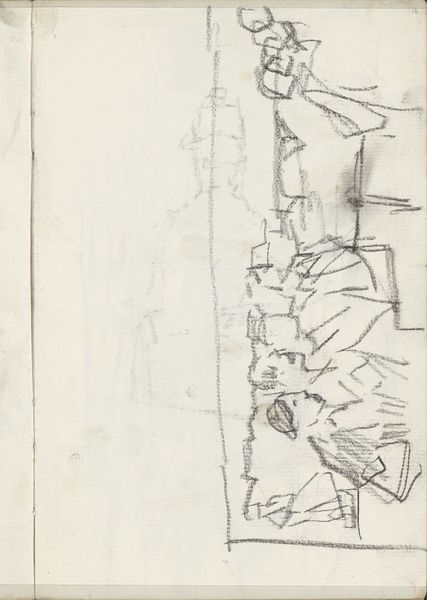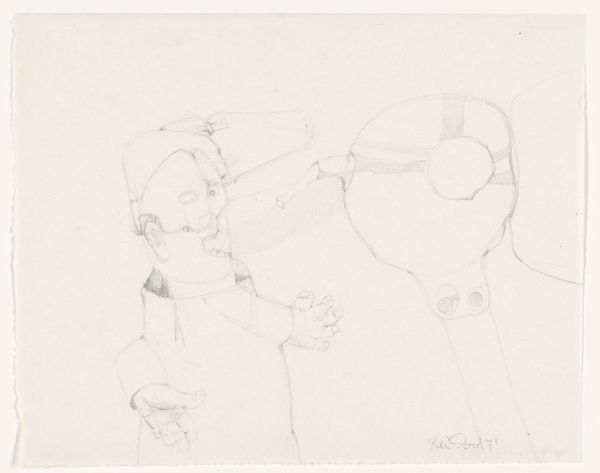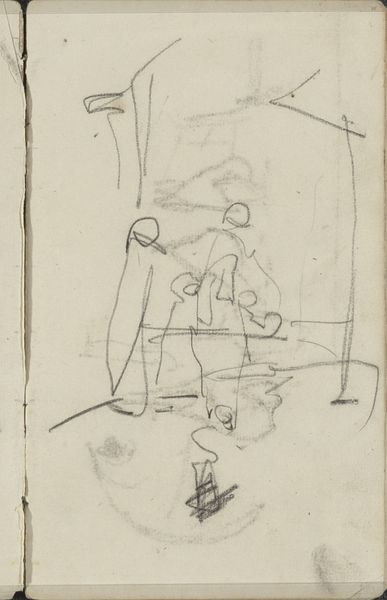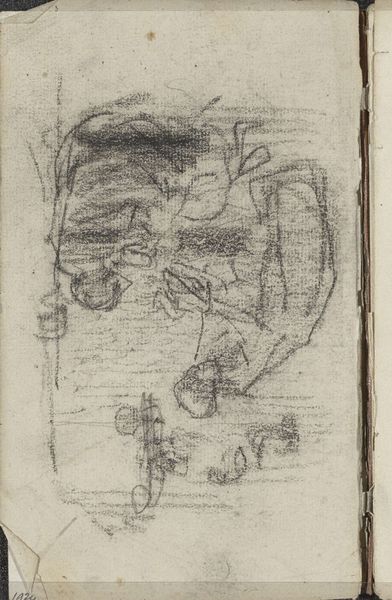
drawing, pencil
#
drawing
#
landscape
#
pencil
#
abstraction
Dimensions: 226 mm (height) x 312 mm (width) (bladmaal)
Curator: Here we have "Udkast til et landskab," or "Draft for a Landscape," a pencil drawing by Edvard Weie, dating from around 1920 to 1921. It's part of the collection at the SMK, the National Gallery of Denmark. Editor: My first impression is one of incompleteness, of something unresolved. It feels tentative, like a fleeting thought captured on paper. The severe angularity hints at hidden tensions in this landscape. Curator: I see that. Weie was working during a period of significant upheaval in Danish art, with artists questioning traditional forms and experimenting with abstraction. The rawness, I believe, reflects Weie grappling with representation. Editor: Absolutely, and I find the geometry interesting. Do you think the basic geometric shapes might reference an attempt to define a world view, imposing structure, or the need to re-examine landscape? Is this idyllic or discordant? The circular shape above calls to me in terms of classical peace and resolution. Curator: Possibly. Though in fairness the setting wasn’t really idyllic—Weie spent the years leading up to this creation in very restrictive hospital placements that had an enormous negative impact. One of the defining elements to consider is the medium. It isn’t oils and lavish, but pencil. Raw, accessible, but subject to the limitations of material and place. That must play some part, I think. Editor: Interesting—it underscores the provisional nature. But beyond Weie's personal circumstances, don't you think that landscape, at the time, symbolized Denmark's changing identity, a grappling with modernization after the first world war? I would love to see any studies relating those concerns to this pencil study. The work here is like layers peeled back – one of questioning traditional values, of cultural transformation. Curator: Well, there are certainly those threads that could be followed further. This pencil draft could definitely be understood as a symbol of its place and time in many respects. But ultimately it invites us to consider what it means to look at the most rudimentary and initial thoughts that were involved in defining new movements in Danish Art. It asks whether any landscape can truly escape historical burdens. Editor: A poignant thought. The visual symbols in “Udkast til et landskab" speaks volumes about individual angst in post war trauma, even in a peaceful land like Denmark, so rich in its cultural legacy. Curator: Indeed, the layers of meaning embedded in these seemingly simple shapes, really bring that through. Editor: I will not be able to look at a simple landscape the same way again. Thank you for sharing this image.
Comments
No comments
Be the first to comment and join the conversation on the ultimate creative platform.
